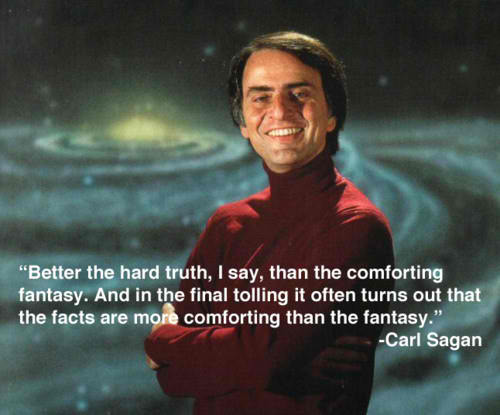GETPSYCHED: AN INTRODUCTION [2/5]
EXAMINING THE HUMAN CONDITION, ONE EVIDENCE-BASED STUDY AT A TIME
These scientist ignite(d) the imaginations of their audience, and crafted an endearing public presence. They are not simply scientists, they are science communicators. They bridge the gap between the esoteric world of scientific endeavor with the wide world of popular entertainment. They popularize and champion imagination, discovery, and critical thinking.
PART 2: SCIENCE COMMUNICATION
Like many, I am enamored by the endeavors of scientists like Carl Sagan, Bill Nye, Stephen Hawking, and Neil deGrasse Tyson. These scientist ignite(d) the imaginations of their audience, and crafted an endearing public presence. They are not simply scientists, they are science communicators. They bridge the gap between the esoteric world of scientific endeavor with the wide world of popular entertainment. They popularize and champion imagination, discovery, and critical thinking. Science communicators enhance public awareness of the sciences and through this increased awareness, they encourage understanding, generate public interest, increase funding for research, and inspire a new generation to wonder, and pursue carriers in the sciences. They fostered my imagination as a youth, and continue to inspire me today.
Early science communicators, like Carl Sagan, were confined by very limited access to very limited media. These traditional media—television, radio and print—limited outreach, and provided little or no audience interaction. Today, the internet provides many new and varied methods for outreach, and facilitates direct and indirect audience interaction. With increased consumer choice, a varied approach reaches a larger audience and provides a greater avenue to interact with this audience. The formation of relationships and communities assist communicators with the dissemination of ideas, values, and information.
Today’s science communicators convey scientific information by embracing multiple avenues of this new and varied online media. Communicators use the internet as an inexpensive method to reach hundreds of thousands. Communicator like Steven Novella, a Yale clinical neurologist, prolific blogger, podcaster, and president of The NESS; Phil Plait, the “bad” astronomer, former discovery channel host, and blogger; and Kiki Sanford, a podcaster, trained neurophysiologist, and also a blogger. They employ many methods—blogging, podcasts, YouTube, and social media like Twitter and Reddit—to increase awareness and promote community involvement and interaction.
Early science communicators, like Carl Sagan, were confined by very limited access to very limited media. These traditional media—television, radio and print—limited outreach, and provided little or no audience interaction.
The availability, low costs, and near instant access of online socially interconnected media afford new science communicators an opportunity to develop a relationship with their audience not available to previous communicators utilizing traditional media. By providing an interactive platform, communicators promote enriched discussion, interaction, and information discovery. The new media facilitates independent learning, and reinforce their efforts to develop an audience of independent science enthusiast.
THERE’S MOVEMENT ALL OVER THE PLACE
Newer efforts do not focus solely on increasing public awareness scientific discovery. Today, science communicators attempt to develop critical thinking and encourage independent learning. Newer communicators encourage healthy skepticism of all information. The same media utilized by new communicators has also provided easy access to misinformation.
We are exposed to vast amounts of information each day. Misinformation, contradictions and pseudoscience runs rampant online—and traditional media. Science communicators must not only reveal the dangers of pseudoscience, but teach their audiences how to differentiate between valid, evidence-based knowledge, and unsubstantiated, anecdotal information.
New communicators help to filter biased information by providing a clear message, supported by observable facts. The need for science communication increases exponentially as more people gain access to online services. The internet provides nearly instant access to a growing abundance of misinformation, from misrepresent, invalid or contradictory sources.
Like these communicators, I will provide an objective analysis of psychological science. GETPSYHCHED will present a psychology focused science communication, filter erroneous findings and unreliable information, and provide clear, consistent, evidence-based reflections on contemporary research.
STAY TUNED and GET PSYCHED!
Next Post: Wednesday, September 25th, 09:00 EST
An Introduction, Part 3: SCIENTIFIC JOURNALISM
Find me @getpsychedblog on Twitter
Coming soon! The GETPSYCHED sub-reddit
 Send to Kindle
Send to Kindle







